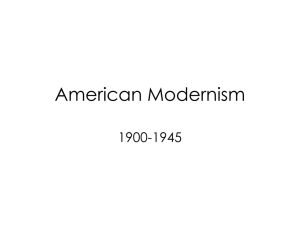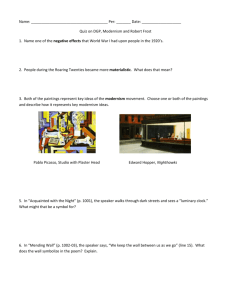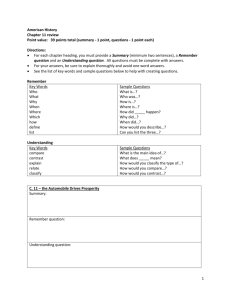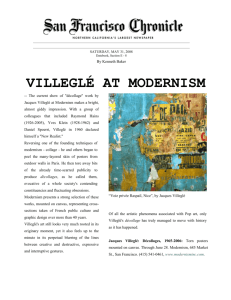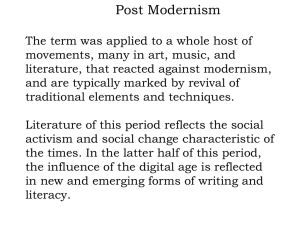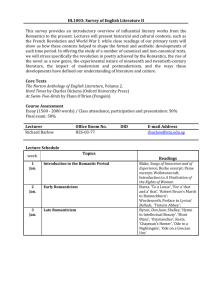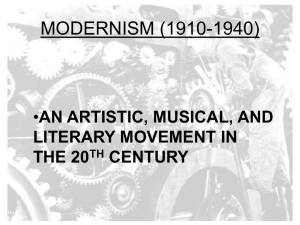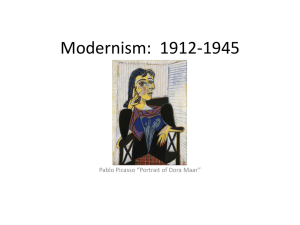Introduction to F. Scott Fitzgerald's The Great Gatsby
advertisement
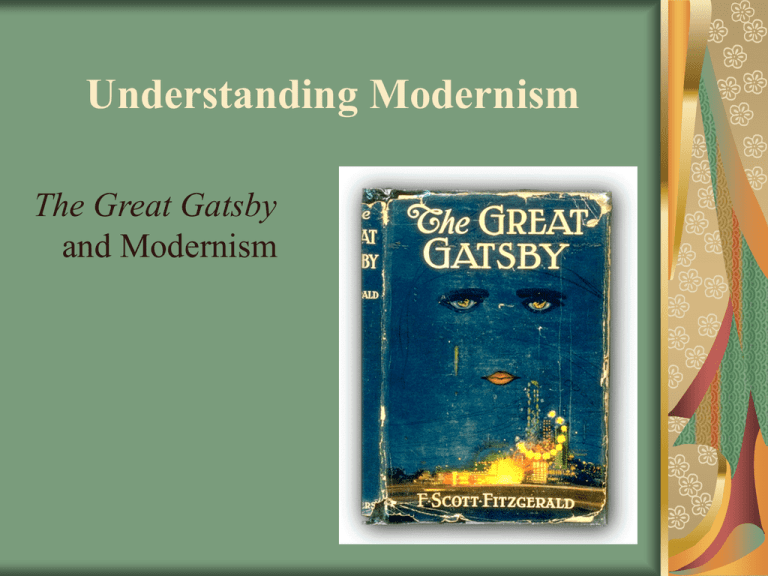
Understanding Modernism The Great Gatsby and Modernism Understanding Modernism, A Summary It’s useful to think of Modernism in two ways: first, as a “condition”, rather than an intellectual movement, and second as a general literary movement. Modernism, as a literary style, emerged after WWI, beginning in Europe and then progressing into American literature by the late 1920s. After the First World War many people questioned the chaos and the insanity of it all. The world’s “universal truths” and trust in authority figures began to crumble, and Modernism was a response to the destruction of these beliefs. The Modern Condition Unlike the Enlightenment and Romanticism, however, when we speak of Modernism we often refer to it as a “condition” rather than a movement; while the Enlightenment argued that Rationality and Freedom would save man from himself, and while Romanticism argued that Love and Emotion would correct the sterility and “heartlessness” of the Enlightenment, Modernism is in many ways a critique of the empty or impossible promises of both previous movements. Artistic Expression It was more than a literary movement, though. Modernism can be seen in many types of artistic expression from the period 1928-1945 in America. Question to Consider: What are Gatsby’s various identities? Question to Consider: Why does Nick consider Gatsby “great”? Modernism’s Characteristics Fragmentation – in plot, characters, theme, images, and overall storyline. Thus, for instance, many modernist works are not in the typical linear sequence. Loss is a huge theme in modernist works. The destruction of the family unit. The “truth” is questionable, as a common theme, and thus, you cannot always trust the narrator to tell the truth, whereas in traditional literature it is the narrator’s job to make the reader understand what’s going on. Also, there may be more than one narrator, showing the diversity of truth. Characters may be given little or no physical description, and one or more characters is usually an "outcast.“ Authority figures are often untrustworthy, reflecting the question of truth. Characteristics cont. Movement away from religion. The reversal of traditional roles (Example: women doing something typically “male” and/or vice versa. Or the changing of customary racial roles). Ambiguous ending; such works often leave a lot of questions with the reader; they don’t tie everything up for you. Characteristics cont. Often setting is more than just the setting (i.e. more meaning to it than just where the story takes place), or, maybe there is no setting at all. The use of improper grammar to reflect dialect. More use of the first person narrative, reflecting the lack of universal truth, i.e. there are only individual truths. Discussion Questions What is the American Dream? Has it died? Why does Nick consider Daisy and Tom “careless”? Conclusion As you can see, modernism is more complex than traditional writing, where there is usually one narrator (third person typically) whose job it is to “explain” everything to the reader. Background is just that, background. The writing is in chronological order and all loose ends are tied up for you in the end.
